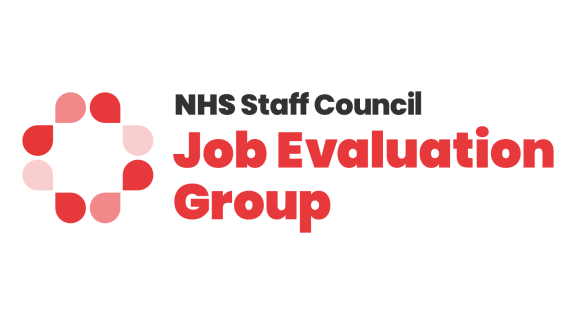Key points
This guidance has been written for local job evaluation (JE) leads and panellists to support their understanding and use of the updated profiles for nursing and midwifery.
It provides an explanation of the updated format for profiles and provides further advice to ensure matching panels are able to use the profiles effectively and consistently.

Chapter 1 - Introduction
1.1 This guidance has been written for local job evaluation (JE) leads and panellists to support their understanding and use of the updated profiles for nursing and midwifery. It provides an explanation of the updated format for profiles and provides further advice to ensure matching panels are able to use the profiles effectively and consistently.
JE Leads are asked to share this guidance with all local JE practitioners.
The key changes made to the profiles include:
- definition of the level descriptor in bold with clearer examples given for each one
- written language, ensuring clarity and accuracy in communication of the differences in level
- replacing descriptive profiles labels with roman numerical titles
- archiving profiles not for use following this review.
1.2 The NHS Staff Council’s Job Evaluation Group (JEG) undertook the review of the profiles in partnership, and all and any changes made to the updated profiles were informed by evidence. Evidence was gathered in numerous ways – a general call for evidence, interviews with role holders, stakeholder discussions and formal consultation. Find further information on the progress of the work on this web page.
1.3 This guidance takes as its main references the NHS Job Evaluation Scheme Handbook. It is expected that panellists maintain the principle of partnership working outlined in the handbook and to ensure successful delivery of the scheme paying particular attention to chapters on the profile conventions and rules on variations to profile factor levels.
1.4 The updated profile suites were published in June 2025. Within the profile suite, there is an overview of the changes that have been made. This guide contains more detailed information and should be read in conjunction with all the other advice issued by JEG that can be found here Job Evaluation Group advice | NHS Employers)
1.5 The NHS Staff Council has also published guidance addressing this issue and setting out its expectations of employers in order to keep job documentation and banding up to date.
Chapter 2 - Explanation of updated profile format
2.1 Panellists will notice that the updated profiles have a new format. This new format will be used for all further profile revision or development.
- The level descriptor for each factor is written in full (in bold) - Panels are reminded that this is the definition they are looking to see evidence of. The wording underneath each possible level descriptor gives examples of the kinds of things you may see in job descriptions to meet the 'bold' definition, but there may be others in the job documentation that you wish to take into consideration. Likewise, just because a job description uses a word from the non-bold does not automatically mean that is the correct level to be awarded.
- Each possible level and/or level option is written in full separately - JEG decided to move away from the previous protocol of using punctuation to denote level differences as this was confusing to people not trained in job evaluation.
- Profile labels - Similarly, in response to feedback that profile labels were leading to inappropriate profile selection, JEG have taken to view to move away from descriptive profile labels to numerical ones. Where there is more than one profile with the same band outcome, the profiles will be denoted by lower case roman numerals (e.g. 6i, 6ii). The comparison document published alongside the updated profiles will help you see the evolution of each previous profile and its new label. JEG are keen to move away from narrative profile labels and will be reviewing the impact of this change in this suite in 2026.
- Profile length - The above changes have led to some of the profiles becoming very long. This is especially true in the nursing suite where one profile covers all branches of nursing so has multiple level options to detail. No inference on the complexity of roles at any band should be taken from the length of the profile.
- Differences in non-bold descriptors for the same factor scores - due to the breadth of roles these profiles cover, there are occasions where, across the suites, different non-bold text is used for the same factor level. No inference on the accuracy of the profiles should be taken from these differences.
Please note – The profiles for nursing band 2 and band 3 were not in scope of this review but have been reformatted so that they are consistent with the others in the suite.
Chapter 3 - Archived profiles
3.1 As a result of the review the following profiles have been archived.
Nursing:
- Associate practitioner/nursery nurse
- Nurse team leader (learning disabilities)
Midwifery:
- Midwife (community)
- Midwife (hospital)
- Midwife (integrated)
3.2 Where profiles are archived, they cannot be used by panels for any matching work from the point of archiving. This does not mean that every job previously matched to a profile that has been archived has to be re-banded. The outcome of the previous match is still valid until the next time the role is considered by a panel (for example, with a rebanding request when jobs change).
3.3 Job evaluation leads must make sure that any local system used that is pre-populated with profiles is updated to take account of these changes and to ensure that archived profiles can no longer be used.
Chapter 4 - Guidance for panels
4.1 Using the updated national job matching profiles
4.1.1 The work to update the profiles, was undertaken on the premise that roles share many standard and common features. These can be described using common language and a common set of terms. Job evaluation is about highlighting similarities between jobs via common language and measurement and these principles were applied during the review. This approach was taken when considering the non-bold examples across factors levels in the revised profiles.
4.1.2 The updated profiles are not speciality/branch nor provider specific (for example, there is one band 5 profile rather than one for each field of practice). Consequently, panels are reminded that they can vary factor scores (within JE rules) if there are differences that warrant a different score than the one in the profile they are using (see 4.5 below on variations).
4.1.3 Profiles are not job descriptions and are not intended to be used for this purpose. They are the outcomes of evaluations of jobs and other evidence gathering. In the same vein, profile labels are not job titles; by removing descriptive labels panels will have to look at job statements to inform their profile selection. This is considered good practice.
4.2 Profile selection
4.2.1 Matching panels should always look for suitable profiles to match a job to from within the ‘same occupational grouping’ using, in the first instance, the job statement and any summary of the job given in job documentation.
4.2.2 Most nursing or midwifery jobs will match to a profile in the updated profile suites however, these profiles are generic i.e. they are not specialty nor provider type specific and there are several other profiles suites that may be more appropriate depending on the nature of the role being considered. For example:
- Dental nursing.
- Health visiting.
- E-nursing/ NHS 111 (Direct).
- Practice education and research.
- Theatre nursing.
- Radiology (for sonographer roles).
- Clinical governance.
- Professional manager (clinical, technical services).
4.3 Profile job statements
4.3.1 The updated job statements should help panels to choose an appropriate profile when matching jobs. Of course, this is also helped when job descriptions include a clear job purpose.
4.3.2 The job purpose should, ideally, allow a read-across to the profile statement. Panels must avoid basing the choice of suitable profiles on the Knowledge, Training and Experience and Freedom to Act factor levels as this may result in an outcome that is not valid.
4.4 Factor level ranges
4.4.1 For many NHS jobs, including nursing and midwifery, there are variations in the duties, responsibilities and other demands within and between NHS organisations, which need to be acknowledged but which may not make a material difference to the overall band outcome.
4.4.2 Profiles include a range of levels in some factors to allow for these differences to be considered when matching jobs and for them to be used effectively across a range of roles.
4.5 Variations
4.5.1 Panels are reminded that up to five variations to profile factor levels are allowed when matching a job. However, where there are multiple variations, even if this is below the maximum allowed, this may indicate another profile may be more suitable. The result of variations must not take the job score above or below the band score boundaries.
4.5.2 Variations are not allowed in two critical factors: Knowledge, Training and Experience; and Freedom to Act. If these factors do not match or there are more than five variations, this indicates another profile, perhaps at a different pay band, may be more suitable or a full local evaluation must be undertaken.
4.6 Factor level examples (non-bold)
4.6.1 For each factor listed in a profile, examples are given to exemplify level awarded. This is sometimes referred to as the “non-bold”. Generic examples of duties, responsibilities and skills are used where possible, however, in some cases a specific example may have been used.
4.6.2 Panels must note that a profile may still be applicable where the particular example used is not relevant to the job under consideration, but they must be able to find their own evidence in the job documentation to satisfy the factor level. The suggested rationales (non-bold text) are examples not absolutes.
4.7 Using the profiles for roles from a range of settings
4.7.1 The revised profile suites can be used across a wide range of roles and pay bands. The profiles can be used to match nursing and midwifery posts across all settings including acute hospital roles, community services, mental health services, clinic roles and other specialist settings. A range of levels in some factors allow for the profiles to be used where job demands may differ, for example, in the communication, effort and environment factors.
4.8 Differences in job demands across the suite of profiles
4.8.1 Whilst it is obvious that job demand increases the higher up the pay bands roles go, panels are reminded that there is not “one thing” that makes a job one band or another and of their responsibility to consider the role in its entirety.
4.8.2 Within the profiles, some factor levels increase evenly when moving through the national pay bands, recognising different job demands. This may be because of managerial responsibilities, specialist roles and skills requirements or a teaching or educational focus. But this is not always the case. It is accepted that job demand increases may come from one or a number of factors and it is essential that panels consider each and every factor thoroughly.
4.8.3 In addition, panels are also reminded of the need to bear in mind the relationship between increasing responsibility and increasing knowledge, training or experience requirements.
4.9 Registration with professional bodies
4.9.1 Panels are reminded that registration with a professional body is not directly related to either knowledge generally, or to any particular level of knowledge, e.g. level 5. Whilst registration is important and required for many NHS roles because it provides guarantees of quality of practice, it is not relevant in job evaluation. Only the qualification necessary for registration will be taken into account.
4.9.2 Many healthcare professional jobs require knowledge at level 5 and require state registration for professional practice. However, it is perfectly possible for other groups to achieve a level 5 without a requirement for registration.
4.10 Ambiguity in job descriptions
4.10.1 Where panels find there are vague statements made about responsibilities or there is ambiguity (e.g. “may take charge in the absence of ward manager”) panels must ensure they fully understand the role requirements and how they relate to all of the 16 factors. An increased level of responsibility may indicate an increase in skill/knowledge required. See also Appendix 1.
4.11 Use of person specifications
4.11.1 Panels should remember that person specifications are often written for recruitment purposes only and therefore they must ensure they understand the requirements for full competency in the role, not just at the point of recruitment. This may involve asking questions of the job holder and line manager.
4.12 Notes on some specific factors
4.12.1 Factor 1 – Communication
Panels need to make sure that they take into account ALL elements required in the factor levels e.g. complex, sensitive, contentious is in level 4a and level 5c. For level 4a panels would look for “barriers to understanding” whereas for level 5c “significant barriers to acceptance that need to be overcome and communicating in a hostile, antagonistic or highly emotive atmosphere” is required.
4.12.2 Factor 2 – Knowledge, training and experience
Panels are reminded about job evaluation guidance on this factor.
In particular, it is essential that this factor is not viewed in isolation.
- The whole of the job description, person specification and any other relevant information needs to be considered by the panel prior to determining the level to be awarded for this factor.
- Knowledge, skills and experience can be gained through various routes such as through on the job learning and is not dependant on short courses or external/formal training.
- Matching panels should refer to the KTE guidance and KTE escalator previously published, and care should be given to ensure on the job learning and informal training are properly considered and weighted when determining factor level.
- The guidance also includes information on how to determine an equivalent level to knowledge to a formal qualification.
4.12.3 Information resources: Factor level 1 refers to recording personally generated information, this includes clinical observations, test results, own reports, personal and/or research data. Record keeping is also considered under Factor 6 Patient Client Care. Care must be taken when measuring this factor due to the risk of double counting within responsibility factors.
Effort factors and environment factor: Panels need to consider both frequency and duration of effort required/exposure. Both terms are defined in the NHS JE Handbook.
There may be roles whereby demands are greater across the effort factors and will require a variation in level awarded. Where variations occur that results in overall score being outside of the band boundary see above guidance 4.5 on variations.
Chapter 5 - Assessing job descriptions statements
5.1 Below we have copied some common phrases from job descriptions and indicated the types of questions job evaluation panels should ask to ensure they understand fully what the job entails. These are just examples and not a definitive list. Panels must make sure they understand the requirements of the role fully.
Example 1: | |
| Job description content | You will work to the level of your experience, assessed competence and skills acquired within the post. |
| Questions |
|
Example 2: | |
| Job description content | Take charge of the ward in the absence of the ward manager. |
| Questions |
|
Example 3: | |
| Job description content | Evidence of further education/courses. |
| Questions |
|
Example 4: | |
| Job description content | Excellent verbal and non-verbal communication skills. |
| Questions |
|
Appendix 1 – Asking questions to determine factor levels
The table below takes the wording from the NHS JE Handbook to describe the job demand that each factor measures.
Panels have the responsibility to ask as many questions as they deem necessary to ensure they understand the role fully and are able to agree levels for all factors.
| Factor | Panels should ensure they fully understand |
| 1 |
|
| 2 |
|
| 3 |
|
| 4 |
|
| 5 |
|
| 6 |
|
| 7 |
|
| 8 |
|
| 9 |
|
| 10 |
|
| 11 |
|
| 12 |
|
| 13 |
|
| 14 |
|
| 15 |
|
| 16 |
|



